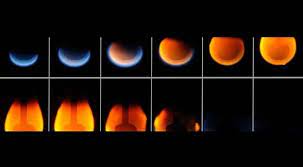Fighting fire with fire: NASA to conduct experiments how things ignite, burn, & are extinguished in space
Categories: SCIENCE NEWS

In space, fire behaves differently; changes in gravity and air flow can alter its spread and make extinguishing it more difficult. Exactly how do engineers build fire-resistant homes on the Moon, where only 12 people have walked, or on Mars, where no one has even been? How do they research flammability in these unknown or little-known environments? As part of Northrop Grumman's 17th cargo resupply mission to the International Space Station, NASA's Solid Fuel Ignition and Extinction project (SoFIE) will conduct experiments that will shed light on fire in space. “With NASA planning outposts on other planetary bodies like the Moon and Mars, we need to be able to live there with minimal risk,” said Paul Ferkul, SoFIE project scientist at NASA’s Glenn Research Center in Cleveland. “Understanding how flames spread and how materials burn in different environments is crucial for the safety of future astronauts.”As NASA prepares to go farther and stay longer in space, the experiments will also enable it to identify the best ways to extinguish fires or smoldering materials while in space. To demonstrate flame growth, decay, and extinction in space, a preliminary test called Burning and Suppression of Solids (BASS) burned a synthetic resin on the space station several years ago.Scientists can study flames in the station's unique microgravity environment, where they are free from the effects of gravity. Data from the experiment, which cannot be collected on Earth, can then be used to develop mathematical models that predict how those materials would burn on the moon, Mars, or anywhere else. The SoFIE project consists of five investigations that examine the flammability of plexiglass, cotton-based fabrics, and other materials commonly used in space flight.SoFIE is intended to study fire safety in spacecraft, but data from the experiments could also be used to improve fire safety on Earth. Data collected from the study will contribute to the body of knowledge that could be used to improve screening tests for materials that are fire safe for the home, office, aircraft, or other uses.The experiments will be operational until November 2025, during which time NASA may accept proposals for additional experiments.